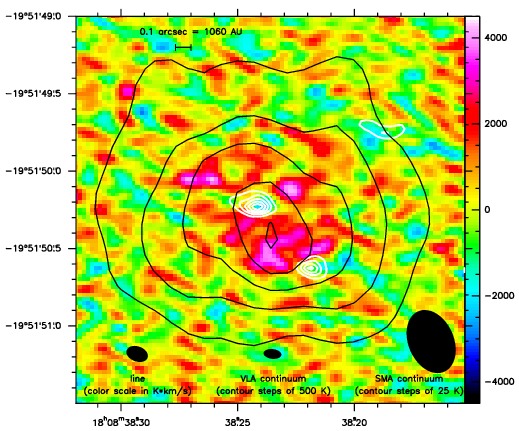| EPoS Contribution |
|
Structure of Hot Molecular Cores
Rainer Rolffs Max-Planck-Institut für Radioastronomie, Bonn, Germany | |
| An approach to understand the formation of massive stars is to reveal the structure (density, temperature, velocity, molecular abundances) of their early surroundings, where dust is heated, but molecules are not yet destroyed. With this aim, we performed APEX observations of 12 hot cores in various lines of HCN, HCO+, and CO, including its isotopologues, high-J transitions and vibrational excitation. Infall is commonly seen by the asymmetric, self-absorbed line shapes; but also expansion components are sometimes visible. Hot molecular gas is traced by vibrationally excited HCN and, in some sources, even HC15N. I will present efforts to model the sources as centrally heated spheres with power law density gradient, computing the dust temperature self-consistently and using RATRAN for the lines. While only the radially averaged structure can be constrained by this method, very high angular resolution is essential to disentangle the small-scale structure, which is not spherical. I will present SMA data of G10.47+0.03 (also at 690 GHz) as well as VLA observations of G10.47, SgrB2-N and -M (see Figure), and discuss its implications on velocity and heating (applying RADMC-3D by to compute the dust temperature in 3-d). | |
 | |
| Caption: High-Resolution map of G10.47+0.03. The background color shows vibrationally excited HCN (direct l-type transition) observed with the VLA; the 7mm continuum (white contours) traces ionized gas. Dust emission is seen by the SMA at 850 micron (black contours). | |
| Collaborators: P. Schilke, U of Cologne, Germany |
Suggested Session: Massive Stars |

